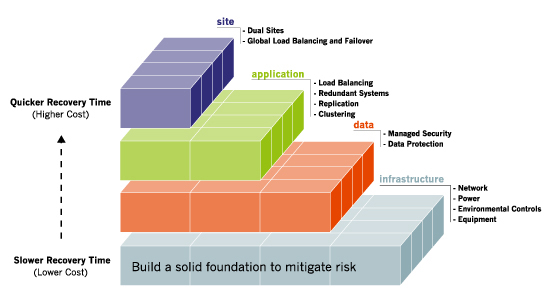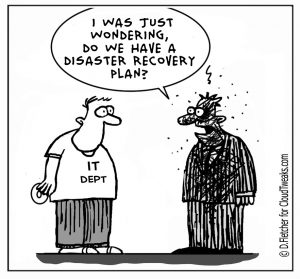We get calls from companies everyday voicing cyber security concerns. The most common first lines that we hear from clients calling in is, “We think we’re safe…but we’re not sure. Could you help us figure this out?” We all hear about the importance of cyber security, but we’re not clear how to be secure.
First off, the single most important thing you can do fo your company is have a disaster recovery plan; a process an organization takes to resume business after a disruptive event. A disruptive event can mean any array of things from an employee calling in sick to a hurricane blowing out all of your power boxes and frying your servers.
Whatever kind of disruptive event that takes place, your disaster recovery plan should include three main things:
- How employees will communicate with one another
- Where they will go to resume work
- How employees will continue to work
A great place to start is with a Business Impact Analysis (BIA), which identifies and evaluates the potential effects of a disruption to business functions and processes. This is perhaps the most critical part of your disaster recovery plan because it identifies what you could lose if disaster strikes and threatens your business infrastructure.
Impacts could include:
- Loss or delay of sales or income
- An increase in expenses to fix the issue
- Customer dissatisfaction and abandonment
- Increase in marketing costs to bring back customers

It is important to adequately plan for an emergency. Your office building probably has a sprinkler system in case of fire. Using the same concept, you need to have a sprinkler system for your infrastructure and data against potential disaster. Just like you would test the sprinkler system every month or so, you need to complete daily data replications and backup management for your critical data so you ensure it’s always safe.
If you’re reading this and questioning to yourself if you have a disaster recovery plan for your physical and/or virtual environments, chances are you don’t. Get one. Quickly.
